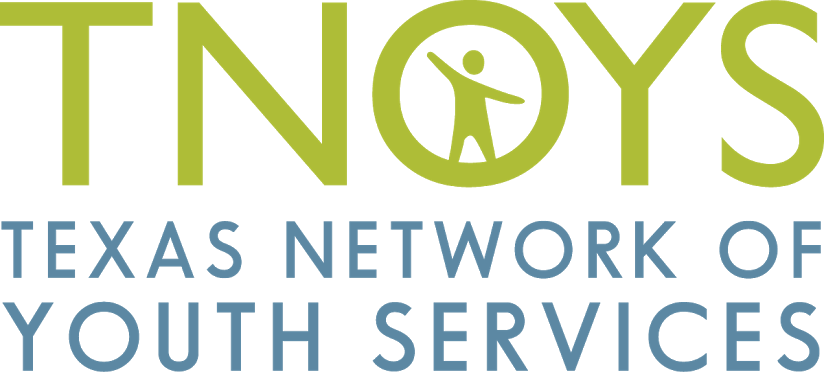 By Katherine Barillas, PhD, TNOYS’ Director of Child Welfare Policy
By Katherine Barillas, PhD, TNOYS’ Director of Child Welfare Policy
The challenges of Texas’ child welfare system have received a lot of attention and many leaders and service providers have been hard at work to find solutions to address them. At the federal level, a new wave of reform presented itself with the Families First Prevention Services Act (FFA), passed earlier this month as part of the “Bipartisan Budget Act of 2018.” Read our analysis below for a better understanding of this new legislation and what it means for our state’s most vulnerable youth.
One of the most promising measures in the FFA will now give states the flexibility to use Title IV-E funding to pay for evidence-based prevention services, rather than just management of foster care and adoption. According to the FFA, prevention services include in-home skill-based programs and mental health and substance abuse services for parents and kinship caregivers (relatives and friends who take in children that cannot live with their parents). Funding can also be used to ensure pregnant and parenting youth in foster care are prepared for parenthood and to place a child with a parent receiving substance use services from a licensed residential family-based treatment facility. Another promising area is expenditures states can make on kinship navigators, programs that provide guidance for kinship caregivers.
IV-E dollars could result in additional RFPs for families served by Family Based Safety Services including children placed with kin through a Parental Child Safety Placement as well as adoptive and guardianship families. Unfortunately, prevention under the FFA isn’t directed to alleviate problems before a family is experiencing a crisis so neither state nor federal IV-E dollars can be used on the majority of current services provided by Prevention and Early Intervention (PEI) at the Texas Department of Family Protective Services (DFPS).
The FFA also comes with additional costs and challenges in terms of new evidence based standards requirements for prevention services. Although the FFA provision allows states to phase in the use of evidence-based practice, evaluation of programs and services required to meet these standards is frequently expensive and not readily available among service providers. This may ultimately restrict the variety and number of services at the state’s disposal and prevent families from accessing what are actually effective interventions.
An exciting change with the FFA is greater flexibility for use of Chafee dollars intended to provide career, education and other independence opportunities for youth aging out of the foster care system. The dollars can be used for assistance and services to youth up until they turn 24 (raised from 22) and to access post-secondary opportunities through the Education and Training Voucher (ETV) until they turn 26 (raised from 23). These changes will ensure youth have more time to gain the tools necessary to be independent adults. Providers will need to advocate to ensure these changes don’t result in a contract amendment that isn’t accompanied by more funding.
The most controversial part of the FFA is a requirement starting in October of 2019 that after the second week of foster care maintenance payments, there will be no federal portion of the IV-E payment (outside of administrative costs) for placements that are not family homes. This means that states will have to find other funding to cover the cost of placement. The exception is if the child is in a “specified setting”[1] or is in a Qualified Residential Treatment Program (QRTP). These changes impact shelters, residential treatment centers, cottage homes and transitional living programs that may have to make adjustments to the way in which children are assessed, programs are administered and discharge planning is done.
The goal of the FFA is to improve the way congregate care is used, which is necessary for the well-being of children in foster care and aligns with research showing children do better in family-like homes. However, the changes required by the FFA could result in higher costs for these facilities as well as an ultimate drop in census if they can’t meet standards. This also places a burden on the state and child placing agencies that will have to increase foster home capacity.
Although many provisions in the FFA will benefit the child welfare system, the Texas Legislature must still be willing to put forward additional state dollars to pull down IV-E for kinship navigators and services to older youth not currently funded by state dollars. In addition, services that do not fall under the FFA “prevention intervention” model will continue to struggle for adequate resources. DFPS has already convened a working group to examine the detailed impact of the FFA on the populations it serves. TNOYS will continue to follow developments related to the FFA and provide more information and analysis as it becomes available.
[1] A specified setting, according to the FFA, is one “that provides evidence based prenatal, post-partum or parenting supports for youth, is an independent living program for youth 18+ or provides high quality residential care and supportive services to kids at-risk of being sex trafficked. The QRTP must be trauma-informed, integrate family members in the child’s treatment, be licensed by the state and accredited by any one of the organizations listed in the bill such as the Council on Accreditation (COA).”
